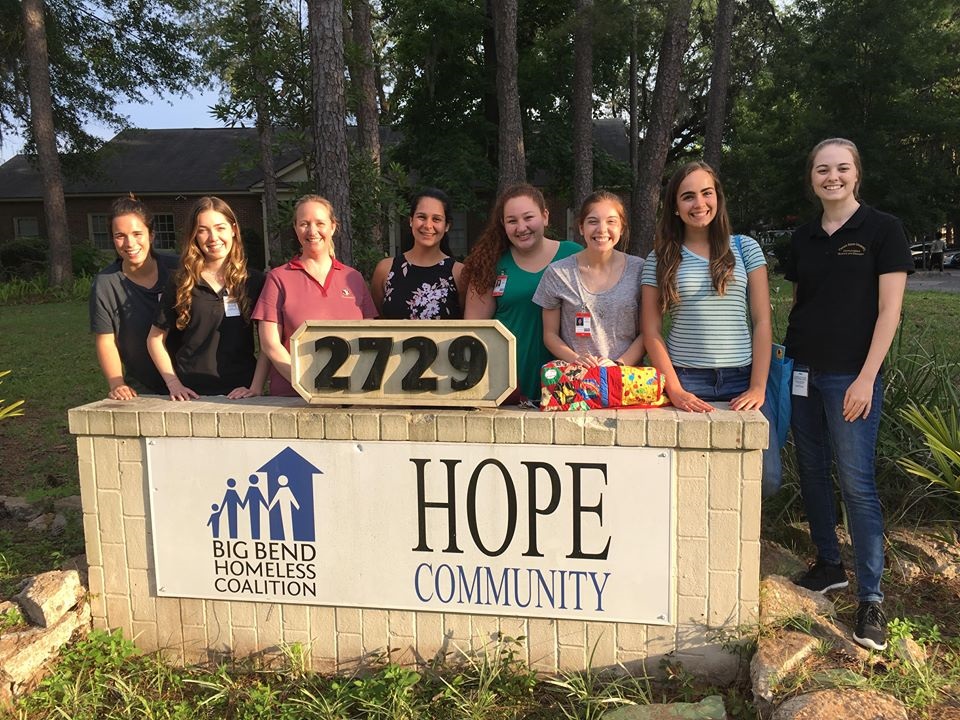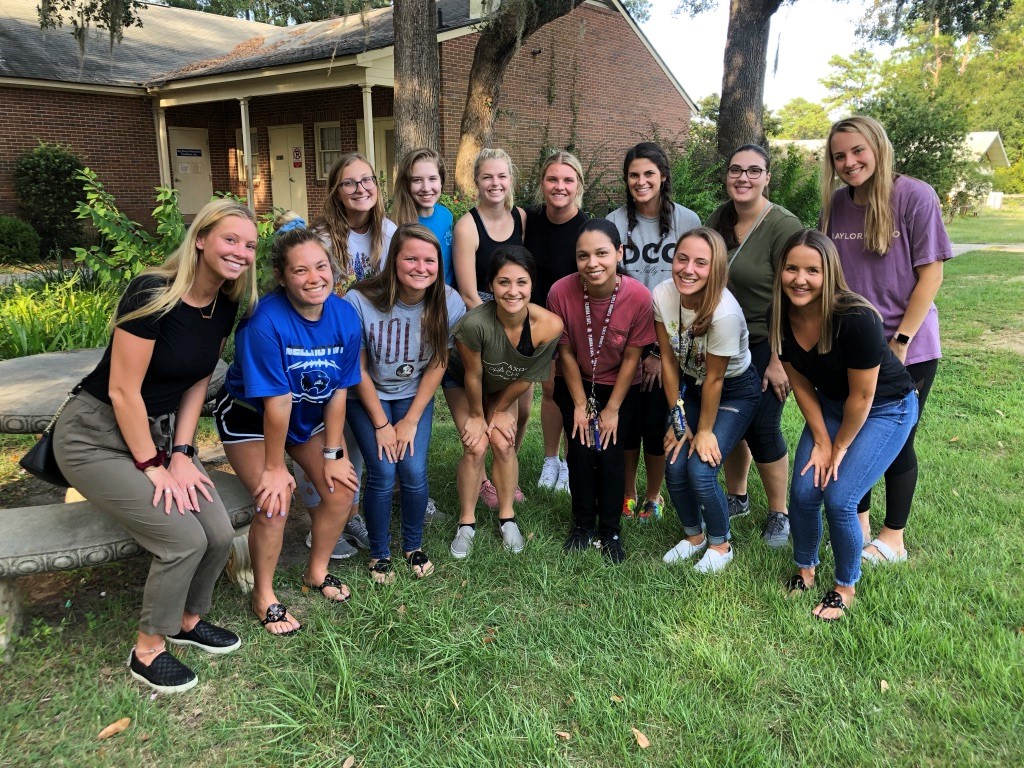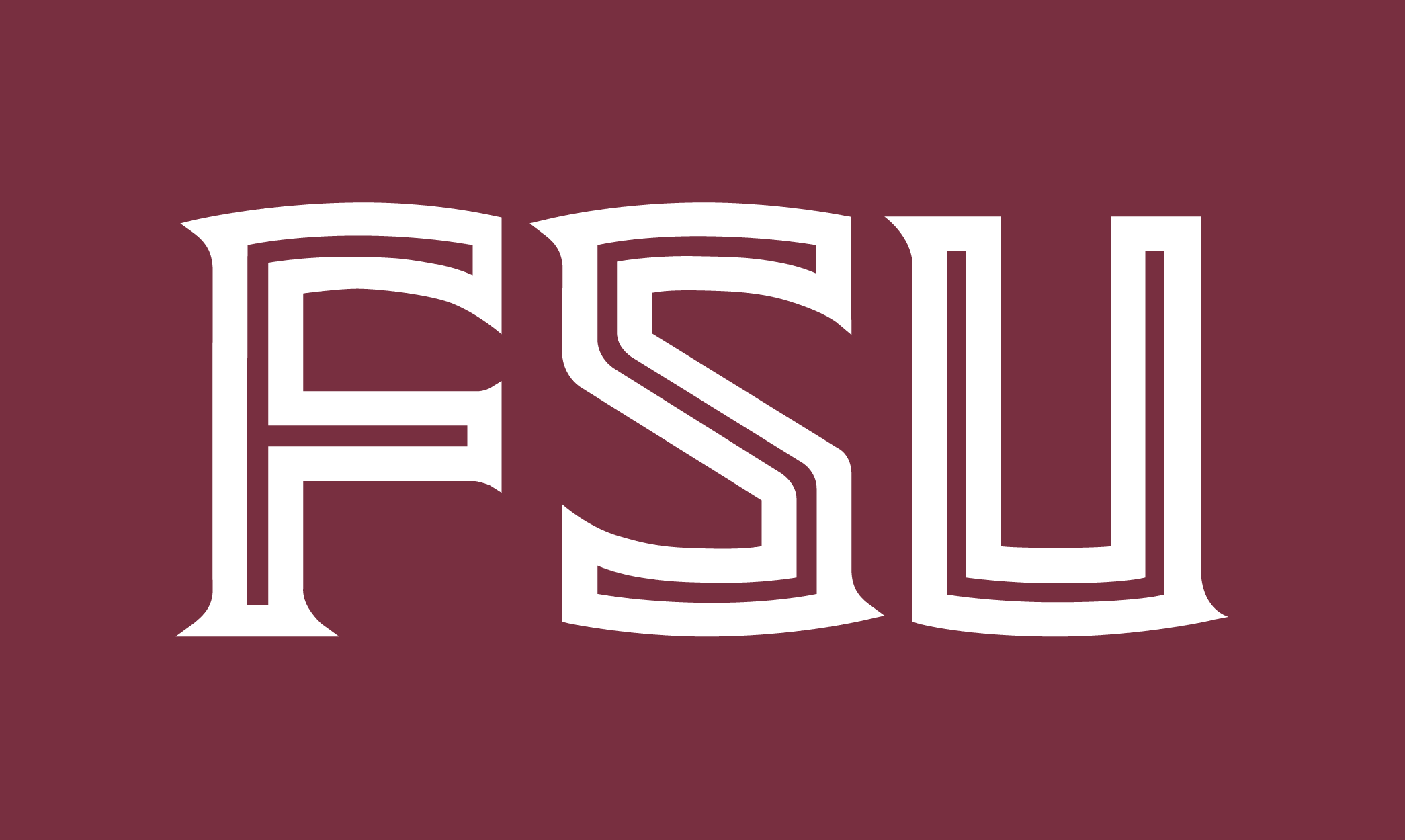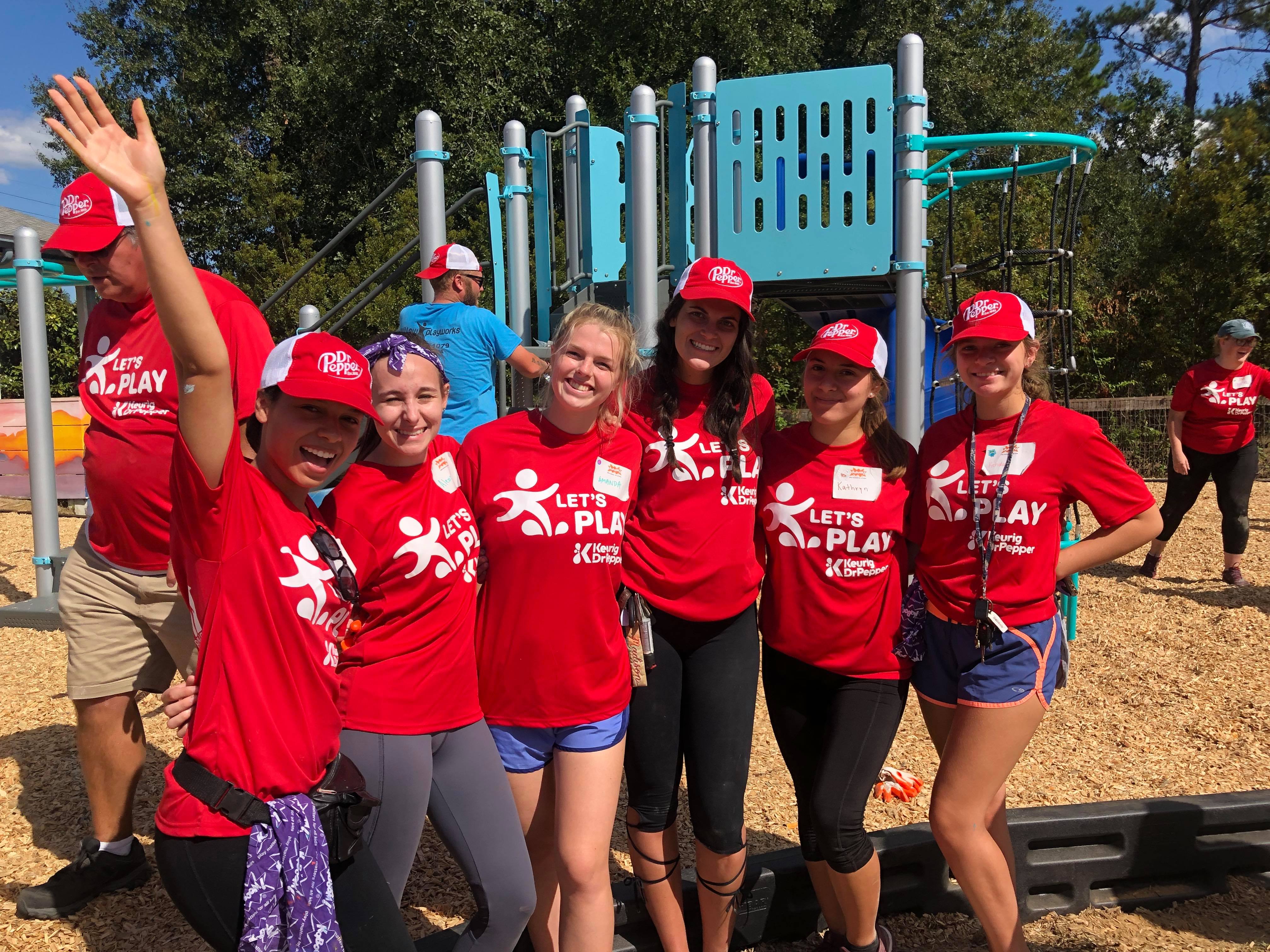 Since 2015, students from FSU’s School of Communication Science and Disorders (SCSD) have been making a difference in the lives of children at Tallahassee’s HOPE Community Center with the Bedtime Story program. Started from a language and literacy training grant for children with higher socio-economic needs, master’s students plan the program during the summer, and throughout the fall and spring semesters students from the FSU NSSLHA Chapter continue the activities. Professor Shannon Hall-Mills coordinates the program, as she has over the past four years.
Since 2015, students from FSU’s School of Communication Science and Disorders (SCSD) have been making a difference in the lives of children at Tallahassee’s HOPE Community Center with the Bedtime Story program. Started from a language and literacy training grant for children with higher socio-economic needs, master’s students plan the program during the summer, and throughout the fall and spring semesters students from the FSU NSSLHA Chapter continue the activities. Professor Shannon Hall-Mills coordinates the program, as she has over the past four years.
 The Bedtime Story program involves students studying speech-language pathology and communication science and disorders. They conduct activities centered around reading books in order to help children at HOPE develop vocabulary and engage in conversation. The children are between ages three and eight, and there are usually around five and fifteen children participating in a single story time hour. During the summer months, master’s students at SCSD plan the lessons based on research-based strategies in order to keep the children interested in reading. This provides the graduate students with the clinical experience they need before graduation.
The Bedtime Story program involves students studying speech-language pathology and communication science and disorders. They conduct activities centered around reading books in order to help children at HOPE develop vocabulary and engage in conversation. The children are between ages three and eight, and there are usually around five and fifteen children participating in a single story time hour. During the summer months, master’s students at SCSD plan the lessons based on research-based strategies in order to keep the children interested in reading. This provides the graduate students with the clinical experience they need before graduation.
 Every Monday during the fall and spring semesters, members of the FSU National Student Speech Language Hearing Association (NSSLHA) Chapter visit HOPE for the Bedtime Story program. Led by Senior HOPE Chair Amanda Prozeralik, these dedicated undergraduate students gain experience working with groups of children. Beyond reading stories to the children, they play memory games and color.
Every Monday during the fall and spring semesters, members of the FSU National Student Speech Language Hearing Association (NSSLHA) Chapter visit HOPE for the Bedtime Story program. Led by Senior HOPE Chair Amanda Prozeralik, these dedicated undergraduate students gain experience working with groups of children. Beyond reading stories to the children, they play memory games and color.
“The time there is spent purely just hanging out with those kids, making them feel special, while also incorporating some teaching lessons in the games,” Prozeralik said. “While playing, we are also being cognizant to look out for any speech or other delays that the children may have, taking note, and reporting that to the Bedtime Story intern, where she can then pass on that message.”
NSSLHA also acts as a partner to the Big Bend Homeless Coalition, performing drives to collect supplies for HOPE as well as other events for the community center. On October 12, volunteers from NSSLHA participated in a playground build at HOPE.
“The time NSSLHA students spend with this community each week is more than just another commitment to fit in a busy schedule and it’s much more than the simple act of reading to a group of kids. While we are there, we are building relationships with the kids, getting to know them beyond their name and favorite color, and taking note of speech and language delays some of the kids may be experiencing so something can be done about it. Bedtime stories is my favorite part of the week that I look forward to each week – having those kids run up to you and giving you a hug as soon as you arrive or hanging on to you because they don’t want you to leave reassures you that your work is making an impact.”
HOPE Community being the largest family emergency shelter in the area, sleeping over 100 children every night. “The trauma of homelessness and living in a shelter can have intense social and developmental impacts on the children that we serve,” said Big Bend Homeless Coalition Development Manager Sara Jean Hargis. “It is only because of our amazing volunteers that we can offer interventions like the Bedtime Story Program and Early Childhood Developmental Screening Program. Hands-on skills-based volunteers give the children we serve opportunities for attention, learning, and fun. These programs make all the difference in helping children overcome the educational barriers of poverty. We are so grateful for the College of Communication and Information and its continued investment and support of the children of HOPE Community.”


